|
Visit our keyboard shortcuts docs for details
The National Park Service has discovered and excavated a Civil War surgeon’s burial pit at Manassas National Battlefield Park. 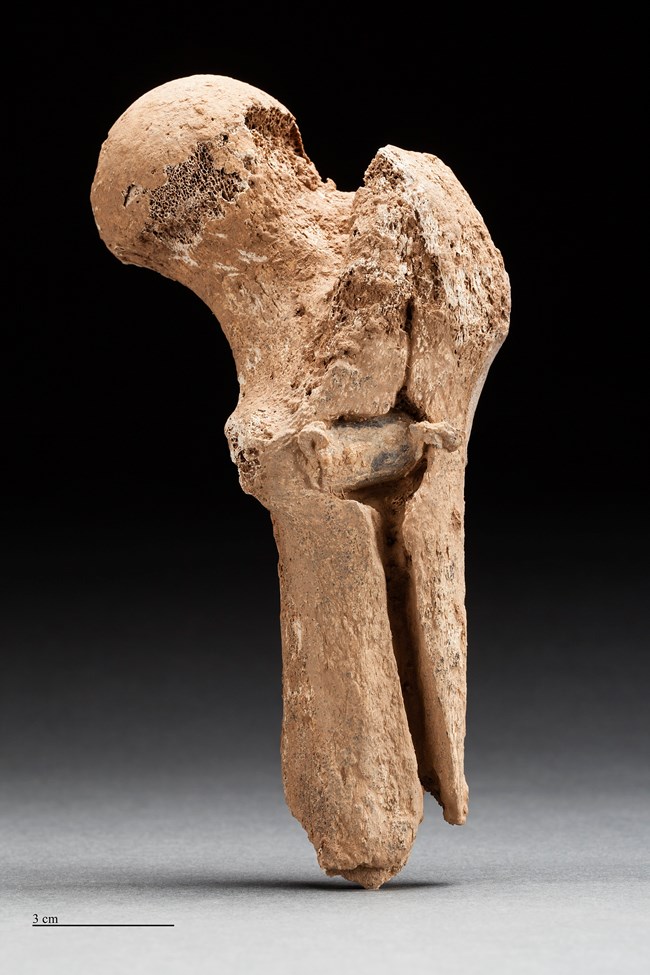
Smithsonian Institution / Kate D. Sherwood An Unexpected DiscoveryIn August 1862, two Union soldiers were gravely wounded at the Battle of Second Manassas. They were brought to a field hospital, though both died as a result of their injuries. Their bodies were laid to rest in a shallow burial pit, intermixed with amputated limbs from other soldiers wounded in the battle. Then they were lost to history.The National Park Service (NPS) first encountered the remains during a utility project in 2014. With help from the Smithsonian Institution, the NPS was able to identify the remains as Union soldiers, and worked with the Army to give these soldiers an honorable final resting place. The DigIn 2014, Manassas National Battlefield Park was working on a utility project. Although previous archeological testing of the area did not identify any significant finds, during the utility installation several small fragments of bone were unearthed and collected by the archeologist assigned to monitor the work.At first, no one knew exactly what, or when, the bone fragments were from. To find out, the NPS sent the fragments to the the forensic anthropology lab at the Smithsonian Institution's National Museum of Natural History. Researchers there determined that the fragments were human, and that they dated to the Civil War. What's more, a piece of femur bone they were able to piece together had been sawed off, consistent with an amputation. All that information led to the conclusion that further excavation was needed. It was possible that something incredibly rare was on the site, and this was an invaluable opportunity to study and preserve the findings. 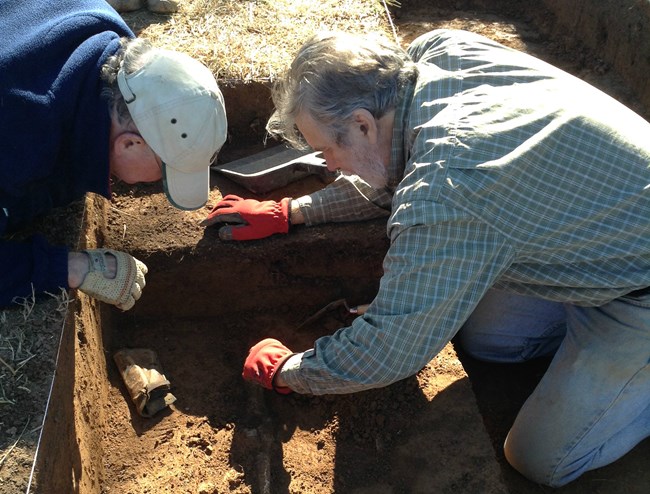
NPS / Karen Orrence Beneath the surface, they found two nearly-complete human skeletons, and several artifacts including buttons from a Union sack coat, a .577 Enfield bullet, three pieces of .31 caliber lead buckshot, and an assemblage of eleven arms and legs. The discovery was something incredibly rare: a battlefield surgeon's burial pit. In fact, this was the first time such a burial pit had ever been excavated and studied at a Civil War battlefield. To learn more about who these bones belonged to, the NPS again turned to the lab at the Smithsonian to investigate. 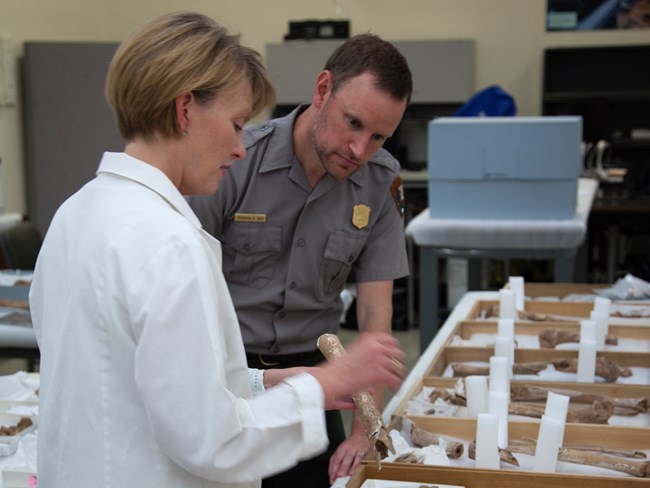
NPS / Nathan King The LabForensic anthropologists from the Smithsonian helped the NPS remove the bones from the site and moved them to a laboratory at the Smithsonian's National Museum of Natural History for further study.By analyzing the chemistry of the bones, researchers determined where the soldiers were from. Carbon isotopes and oxygen isotopes indicated they ate food and drank water from northern latitudes. Combined with the artifacts including sack coat buttons found with them, they were identified as Union soldiers. By analyzing the teeth, joints, and bone structure of the two skeletons, scientists determined the first was a man in his late 20's who died as a result of injuries from an Enfield bullet striking his upper leg. Surprisingly, the bullet was still lodged in the femur bone, likely because it slowed as it passed through the man's cartridge box. 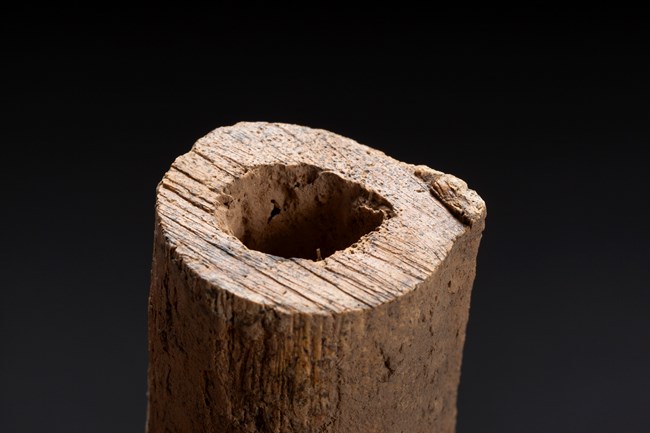
Smithsonian Institution / Kate D. Sherwood Both men were taken to the field hospital, but appear to have died without being operated on. Their injuries were too severe. Research on the eleven limbs recovered from the surgeon's burial pit continues. By examining the cuts, it is possible to determine the skill of the surgeon and even his physical position relative to the patient. With help from historical records, researchers believe it may be possible to match the bones with a specific surgeon and maybe even the soldier they belonged to, a truly unique discovery. 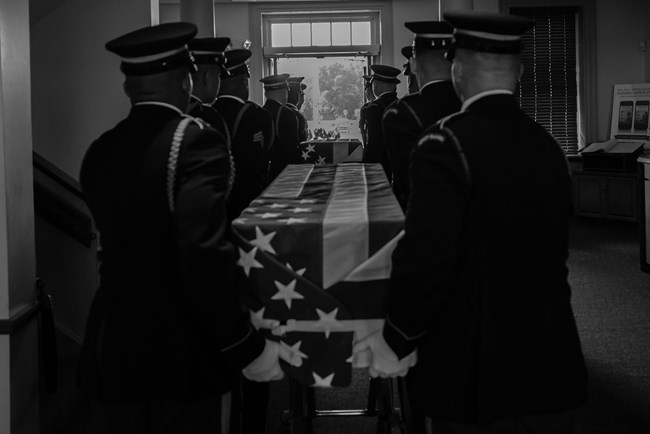
NPS / Bryan Gorsira A Place of HonorAfter the remains were identified as soldiers, the Army expressed interest in giving the men a permanent resting place at Arlington National Cemetery.On June 19, 2018, the NPS transferred the remains of the two soldiers to the Army. The 3rd U.S. Infantry Regiment, "The Old Guard" moved the remains to Arlington to await their interment at a ceremony in September. To prepare for the interment, an NPS historic preservationist and two NPS volunteers worked together to build two custom-made coffins for the soldiers's remains in August. Made from the wood of a wind-felled oak tree that grew on the Mansasas battlefield, the wooden coffins were designed in an old-fashioned "toe-pincher" design, wider at the shoulders and narrower at the head and feet. The remains would then be wrapped in reproduction Civil War blankets and placed into the coffins for burial in September. 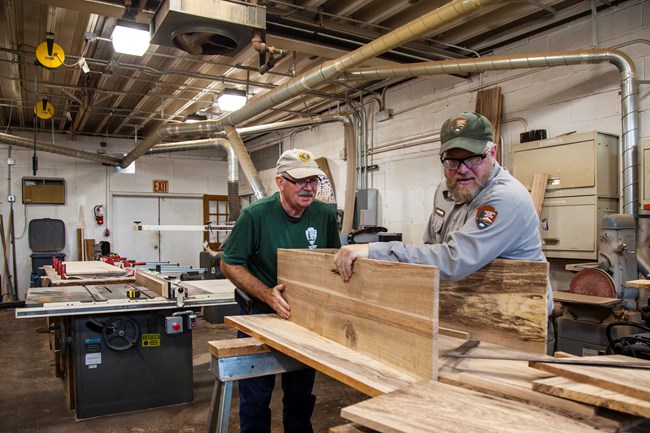
NPS / Rachel Hendrix Discovering these soldiers' remains led to valuable research that has helped us better understand what happened during the Second Battle of Manassas and of Civil War medicine. Being laid to rest in Arlington National Cemetery will honor their memory and the sacrifice of so many service members throughout our nation's history. |
Last updated: June 12, 2024
